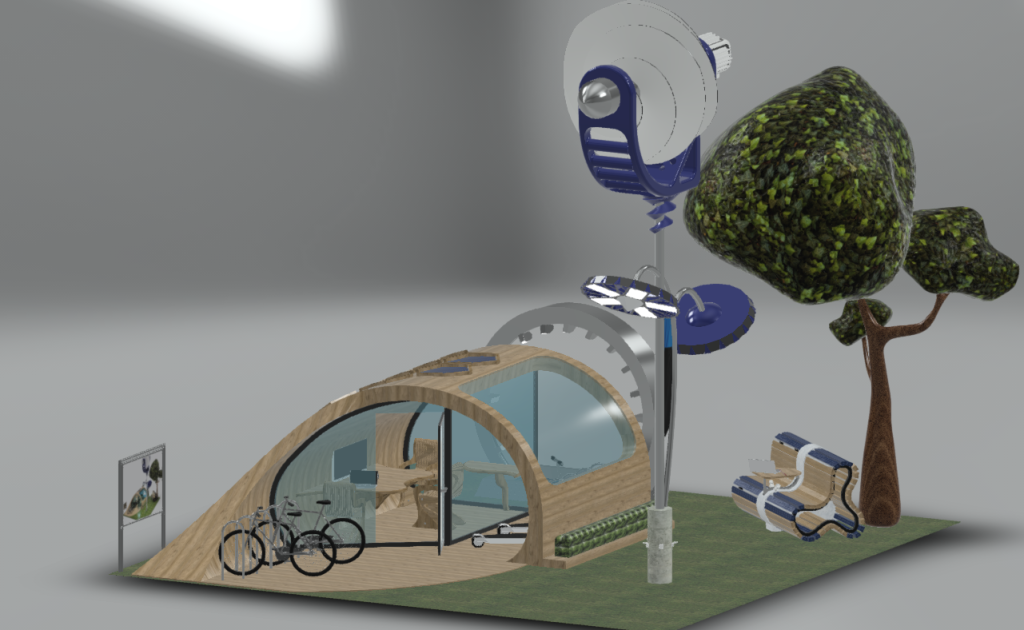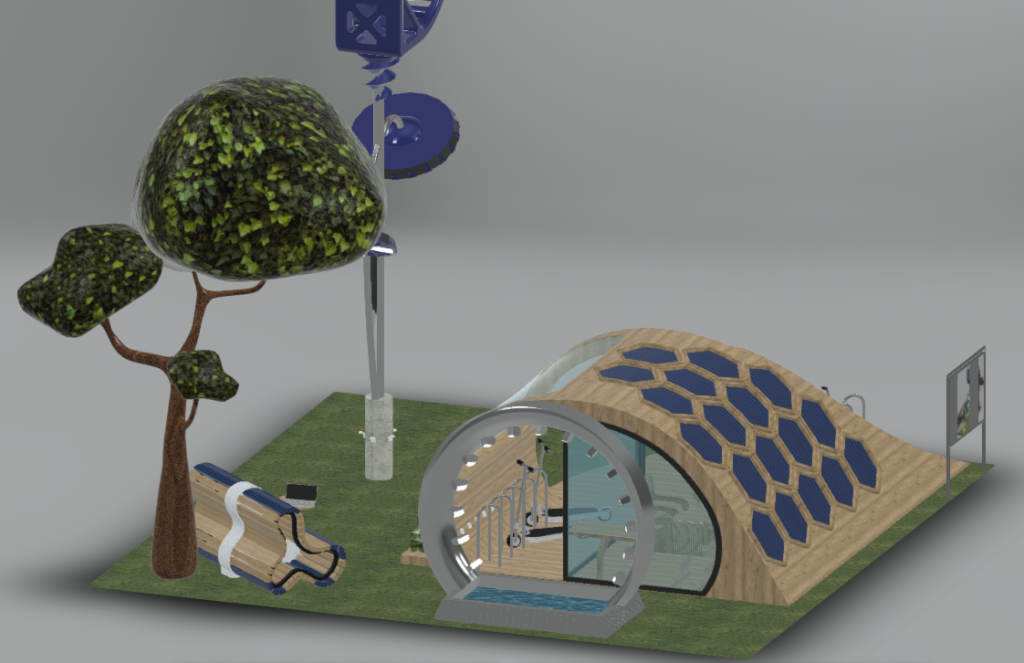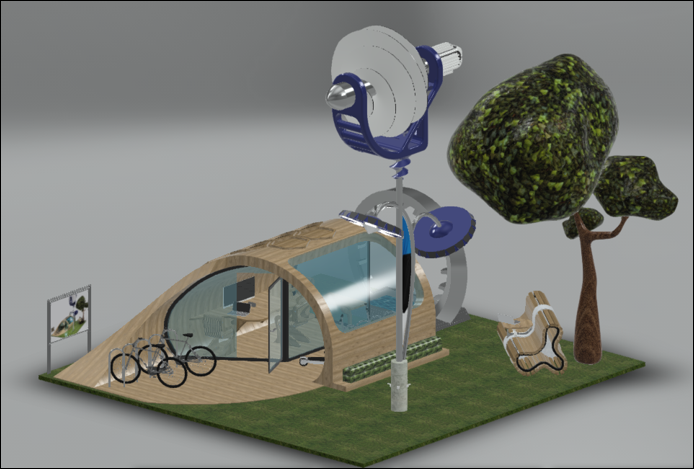Team Barely Bearing from Tallinn University of Applied Sciences claimed joint third place in the international Designathon 2025 thanks to their concept for a modular, weather-proof student workspace hub powered by wind and solar energy.
The three-strong team of Nikita Kulakov, Nikita Pikkas and Reimo Vellemaa placed joint third in the student design competition. Studying Mechanical Engineering or Robotics Engineering, the team impressed the jury with a solution which combines a timber enclosure, e-bike charging stations, a wind-turbine lamp-post, roof-mounted modular PV panels and an outdoor bench for collaboration and relaxation.
The team drew inspiration from nature, the Archimedean/Fibonacci screw, the desire for the solution to fit into many different climate settings and for it to be aesthetically pleasing.
Barely Bearing achieved the same score as two other entries, underscoring the competitive nature of the Designathon challenge.
The jury said of the team’s entry:
“We liked this project for its use of natural materials and for the integration of renewable energy solutions for study and travel. The design brings together a number of features which demonstrate the team’s focus on sustainability and usability.”


Delighted to secure joint third place, the students talked about their motivation for participation in the Designathon challenge, saying:
“We wanted to push ourselves to learn more and make collective creative decisions in a limited timeframe. It allowed us to put our knowledge and skills to the test in Autodesk Fusion.”
As active members of their university’s Robotics Club, the students plan to keep using Autodesk Fusion for club projects and 3-D-printing experiments. Showcasing a Designathon podium finish on their CVs is, they say, “a definite selling-point for future employers” as they move towards careers in design, optimisation and automation.
About the Designathon
Designathon 2025, organised by KnowledgePoint, was the third edition of a two‑day international online design challenge for teams of engineering and industrial design students. Students were offered training to boost their Autodesk Fusion modelling skills and learn about key workflows.
They then worked in teams of two or three to respond to a sustainable design challenge – the student teams were asked to design an accessible, aesthetically-pleasing outdoor hub where students can gather, work and charge their devices. The solution needed to use a renewable energy source (or sources) for the electrical supply. The design needed to consider durability, usability and impact on the environment.
This year teams of students from 140 educational institutions took part. 178 projects were submitted, involving 446 participants in 17 countries. Entries were of a very high standard, making the selection of winners very difficult for the jury. For more information about Designathon 2025 and Autodesk’s commitment to education, visit the Designathon page.
